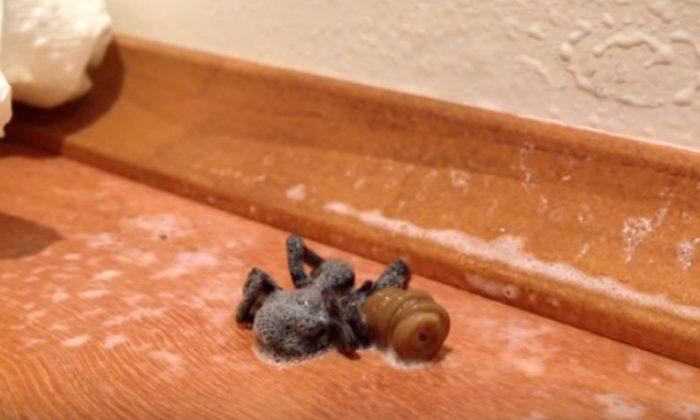The footage shows what appears to be just a spider, but upon closer examination, a parasite emerges.
The thing that’s attached to the spider appears to be a nematomorpha worm, a type of parasitic animal known as horsehair worms or Gordian worms. The range in size between 50 to 100 millimeters, and in some cases, they can get up to 2 meters in length.
“Horsehair worms develop as parasites in the bodies of grasshoppers, crickets, cockroaches, and some beetles. When mature, they leave the host to lay eggs. They are not parasites of humans, livestock, or pets and pose no public health threat.”
There are some 350 species of nematomorpha known.
When the worms take control of a host, they essentially mind-control them for several months before making them dive into the water and then escape through the insect’s exoskeleton.
According to Wired in a writeup, “All across America in rivers or streams, horsehair worm eggs hatch and settle lazily to the bottom as larvae (we'll be talking specifically about the species Paragordius varius and its parasitism of crickets). Unable to swim up the water column, the larva simply wait to be eaten by the larvae of other insects like midges, mayflies, and mosquitoes.”
“When these insects metamorphose and emerge from the water, they live out their aerial lives with the larva in tow, then inevitably croak and get snatched up by a cricket, according to parasitologist Ben Hanelt of the University of New Mexico.”
“Nematomorpha is a phylum of animals that has been poorly studied. Despite their worldwide distribution, detailed life cycles of Nematomorpha have not been completely documented,” it notes.
In the NBCI report, a species of hairworm was “vomited from an 80-year-old woman and the other was collected from the mouth of a 1-year-old boy by his mother.”
It noted that she was “gargling with a saline solution as she felt something was caught in her throat while she was lying in bed,” while adding that “the worm was preserved in 10% formalin before examination.”
In the boy’s case, the worm “was removed by his mother,” says the agency.





